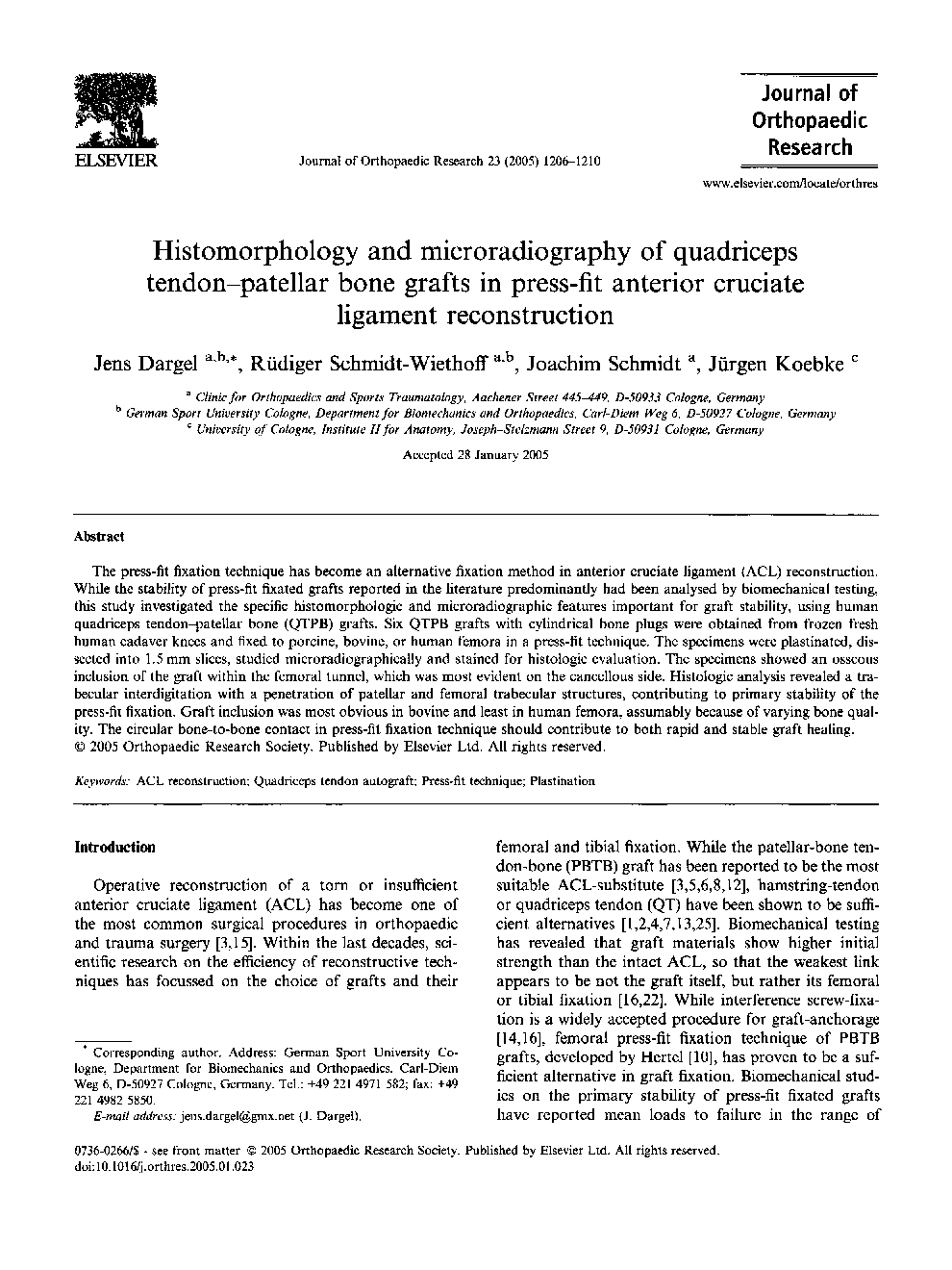| Article ID | Journal | Published Year | Pages | File Type |
|---|---|---|---|---|
| 9353918 | Journal of Orthopaedic Research | 2005 | 5 Pages |
Abstract
The press-fit fixation technique has become an alternative fixation method in anterior cruciate ligament (ACL) reconstruction. While the stability of press-fit fixated grafts reported in the literature predominantly had been analysed by biomechanical testing, this study investigated the specific histomorphologic and microradiographic features important for graft stability, using human quadriceps tendon-patellar bone (QTPB) grafts. Six QTPB grafts with cylindrical bone plugs were obtained from frozen fresh human cadaver knees and fixed to porcine, bovine, or human femora in a press-fit technique. The specimens were plastinated, dissected into 1.5Â mm slices, studied microradiographically and stained for histologic evaluation. The specimens showed an osseous inclusion of the graft within the femoral tunnel, which was most evident on the cancellous side. Histologic analysis revealed a trabecular interdigitation with a penetration of patellar and femoral trabecular structures, contributing to primary stability of the press-fit fixation. Graft inclusion was most obvious in bovine and least in human femora, assumably because of varying bone quality. The circular bone-to-bone contact in press-fit fixation technique should contribute to both rapid and stable graft healing.
Keywords
Related Topics
Health Sciences
Medicine and Dentistry
Orthopedics, Sports Medicine and Rehabilitation
Authors
Jens Dargel, Rüdiger Schmidt-Wiethoff, Joachim Schmidt, Jürgen Koebke,
